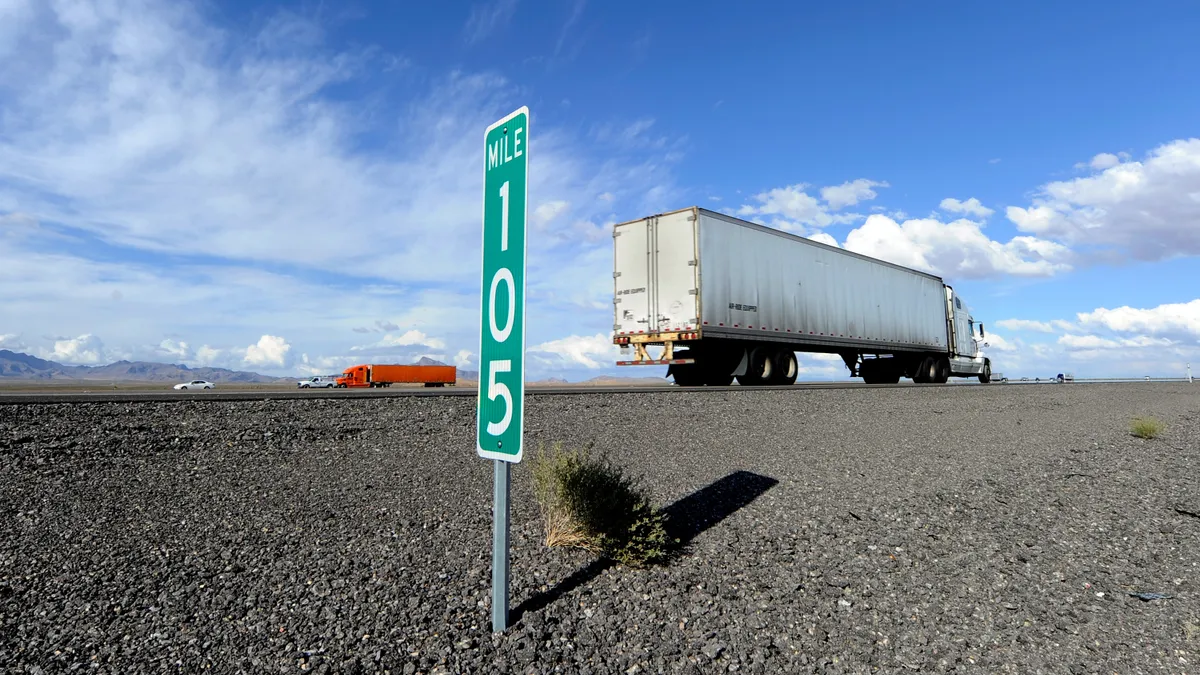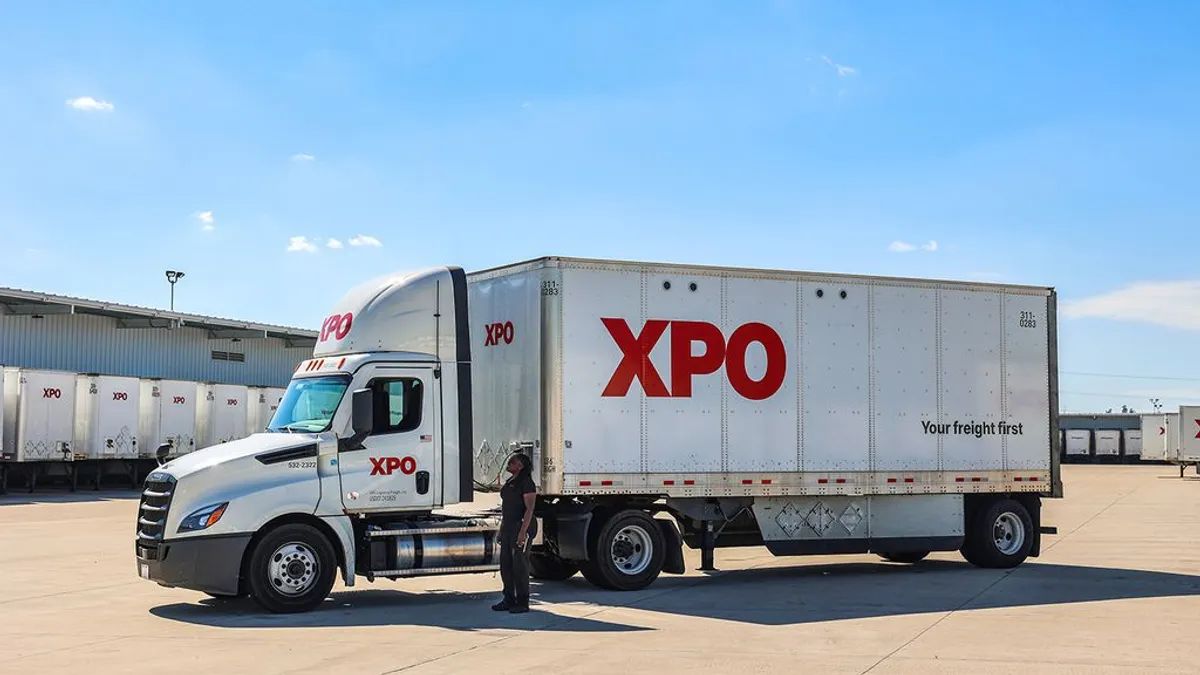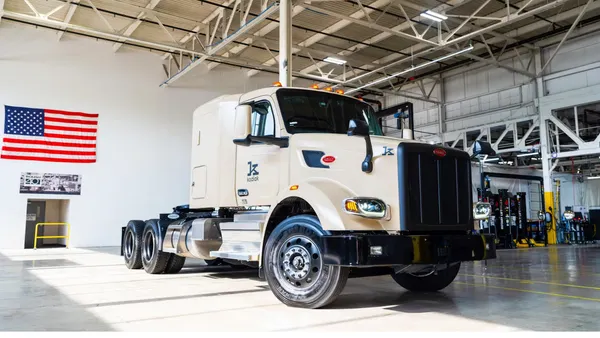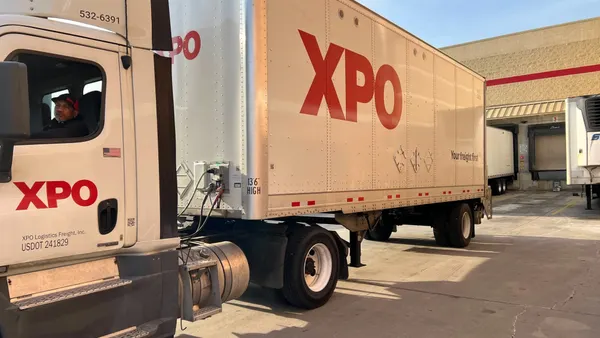Dive Brief:
- The brokerage market is expected to more than double by 2024, thanks in large part to a pandemic-induced acceleration in digitization, according to the Council of Supply Chain Management Professionals' annual State of Logistics Report, authored by Kearney.
- Safety measures during the pandemic have incentivized touchless processes across logistics. "The most promising aspect of digitization comes in greater efficiency of LTL loads," according to the report.
- As brokerage and freight booking migrate more to online platforms, shippers and carriers will be able to perform transactions in a space to which they both have access, according to the report. "New digital matching functions give carriers the ability to place offers on loads, as well as increasing their flexibility," it reads.
Dive Insight:
Trucking is generally thought of as an industry slow to adopt technology. But when the coronavirus put safety on the line last year, the need for social distancing helped make the case for adapting processes that don't involve physical closeness.
"The need to avoid 'touch' processes during the pandemic may have overcome the industry's long-standing resistance to digitization," the report reads. "If so, technology will improve service levels, with advances including online freight booking, which improves efficiency," as well as ELDs.
This trend has gone from proof-of-delivery documents to brokerage, a segment that has handled increased volumes lately. Fleets from Knight-Swift to U.S. Xpress experienced revenue tailwinds from brokerage units, and much of that activity occurred over online platforms.
XPO Logistics CEO Bradley Jacobs said during an earnings call in May that XPO Connect was "the big driver" behind brokerage performance, enabling the business to handle 41% more volume with a 3% increase in headcount over the last five years.
In some cases, carriers provide brokerages with ELD data for predictive analysis — an action that is ostensibly more streamlined if a carrier has a brokerage unit. Brokers use that information to identify the safest carriers, as well as the best and worst shippers, according to the State of Logistics report.
"With fewer claims and incidents on the road, safer carriers will increase [on-time deliveries] and decrease costs while prices are calibrated to shipper attractiveness," the report reads. "In other words, technology-based improvements are factors in driving logistics services buyers to become shippers of choice."












